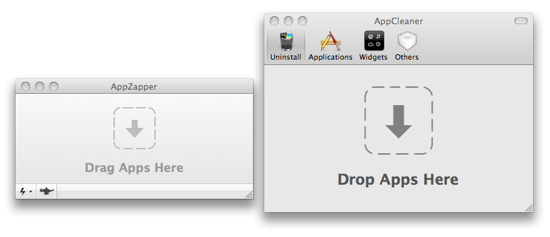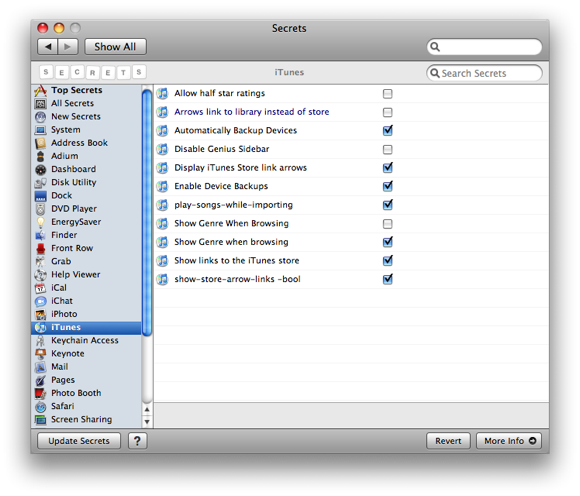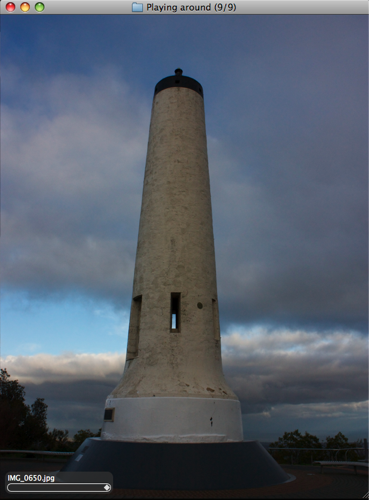One of the first posts I wrote as part of the MakeUseOf team was "10 Essential Mac Apps To Install After A Reformat". That was way back in March, when I was still innocent, young and naive. The title of the article was technically inaccurate; the introduction was misleading and a lot of controversy spewed on Digg as a result.
Since then, I've gotten a little wiser, learnt that I can't really please everyone and mainly focused my attention to my target audience: recent Mac switchers. This particular group of people are those who used to work with Windows (or any other operating system) and somewhere along the way, switched to a Mac. Hence the term - Switchers. There's something unique about this group of people. Their perception of computers have been brought along for the ride, so they think that the traditions which worked on Windows will also be suited to the Mac.
Reinstalling your OS, for instance, or as most people would know it - formatting, is one of such traditions. It used to be an annual event (or sometimes biannual) for me when I had a Windows laptop. I admit, when I first started using a Mac, I assumed that I would have to format it every now and then as well. Oh, I've been proved wrong (and flamed for it). Now, I advise most people to refrain from formatting their hard disks unless there is a OS X upgrade. Formatting is a tedious and time-consuming process of backing up data, keychains, preferences, reinstalling the operating system, updating it and finally putting everything back into place. But...
If you've formatted your hard disk recently, you'll always require a reminder about which applications to get back. Or what I'd like to call the Essential Apps. These apps are always on my Mac and will always be the first to be installed. So, I'd like to re-introduce the 10 Essential Mac Apps To Install After Formatting v2.
Before we start off, let me just say that Quicksilver isn't on this list, in case there are some eager QS fans trying to redeem its usefulness after Spotlight has been so extensively enhanced.
1. Sequential
OS X's Quick Look is good for previewing documents without opening Pages or Microsoft Office, it is also good for previewing movies. But what I find it is not very good at is previewing multiple images because of the funny way one has to navigate through the images (if Finder is set to Icon view). Fine, you could enable the full-screen mode to make browsing easier but then another issue pops up: you can't view the filename unless you return to the Index Sheet.
Sequential is an image viewer that makes it a whole lot easier to browse through a multitude of images in order. It is also able to browse the images within an archive (zip, rar). Just perfect to quickly skim through a folder full of photos and note the ones to be deleted or preserved because their filenames are always displayed in the navigator.
2. [NO LONGER WORKS] Inquisitor
Inquisitor is a plugin for Safari which tremendously enhances its search capabilities. It retrieves results from Google (or Yahoo!) instantly and presents them in a drop-down box as you type your query into Safari's search field. Not only that, if you're not exactly sure of what you're searching for, it will try to suggest some probable keywords.
3. iStat Menus
iStat Menus is a much better application compared to MenuMeters in terms of monitoring system information like CPU load, memory usage, network activity and CPU temperature. All this information sits neatly on your menu bar, thus making the readings very accessible.

Of course, you could go Pro, but iStat Pro is a Dashboard widget. Personally, I prefer iStat Menus even if it means that I get less information compared to using iStat Pro.
4. TeamViewer or Schnitz Remote Lite
Both of these applications are tools for attaining remote help. Assuming that you are a Mac newbie and often require rescue or assistance; and provided you have someone to help you out, either TeamViewer or Schnitz are right for the job.
There are many write-ups about TeamViewer here on MakeUseOf and I have personally written a short tutorial about how to use Schnitz Remote Lite.
5. NTFS-3G and MacFUSE
One of the very many reasons I hear come out from people who refuse to switch to Mac is compatibility. True enough, one of Mac's main compatibility issues is NTFS write capability. Macs can read NTFS-formatted hard disks just fine but when your mate brings his NTFS external hard disk over with the intention of copying some stuff from your Mac - sorry, that operation is invalid.
It's hard to swallow that such a refined operating system cannot provide write-capability for an archaic file system. Nevertheless, it's not the end of the road. By using NTFS-3G together with MacFUSE, you'll be able to write to NTFS drives at almost native speeds. To find out how to install them, check out my post on NTFS Blues.
6. AppCleaner
A free alternative to the very popular AppZapper, AppCleaner is an application you will need to use when uninstalling other programs from your Mac.

Apple teaches its users that the way to uninstall an application is to simply drag it to Trash but by doing that, you're leaving behind a lot of junk files in your Library folder. An Uninstaller is all you need to remove programs and its associated files from your Mac.
7. OpenOffice
I've just listed OpenOffice because I've been coerced into saying, "OpenOffice FTW!" but actually I can switch between OpenOffice and NeoOffice, which is a Mac OS port. Honestly, productivity suites are exactly what they are: for work. Aren't we able to get to work without being too picky?
8. Evernote
If you haven't heard of Evernote, which rock have you been hiding under? It is a fabulous note-taking application. It collects information in whatever medium you give it (photos, text, audio) and stores them in your Mac and online in your Evernote account so that you'll be able to retrieve it from just about anywhere.
If you have an iPhone, even better. Evernote has a mobile version (iTunes link [No Longer Available]) which will allow you to sync the information from your Mac to your iPhone wirelessly.
What makes Evernote so impressive is its ability to search for words within pictures, even handwritten notes succumb to it. It makes the content of photos searchable and by that, you won't need to add notes to photos explaining what is contained in it. The pictures speak for itself.
9. Secrets
Secrets is a system preference pane with a database of hidden settings for OS X. And yes, you can change every one of them and tweak them to your heart's desire. Using Secrets, you can change almost any setting possible, from altering the login background to enabling high definition movie trailers in Front Row. And if you changed something which you shouldn't have, there's always that safety net: the Revert button.

Secrets will only work for Mac OS X Leopard.
10. Skitch
This application isn't absolutely a necessity but if you're looking for a great way to instantly share screenshots, you can't get any better than Skitch. Also, I use Skitch for its resizing and cropping capabilities. Rather than opening up Preview to perform simple cropping and resize tasks, I launch Skitch. Since it is always on the menu bar, it is very accessible. After I'm done, it shrinks back to the menu bar obscurely.
There they are. The 10 updated essential apps. This list does not completely replace its predecessor but merely complements it. There are some applications in the earlier list which cannot be replaced, like Adium, Transmission and Perian, for example.
How would you alter this list? Are there any other free applications that you would have in place of any of the ones here? Let me know in the comments.









